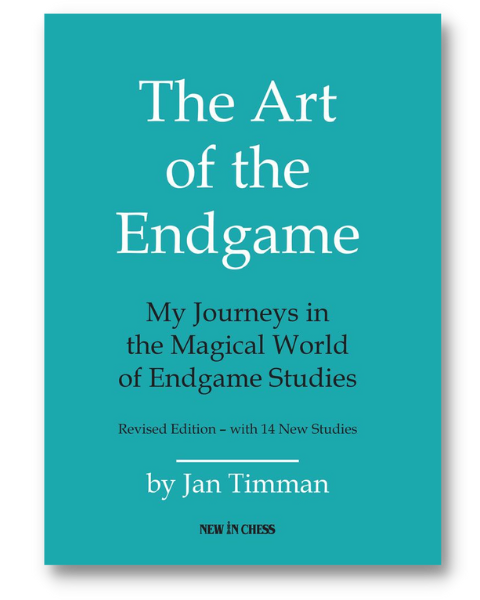Book Review of The Art of The Endgame – Revised Edition by Jan Timman
“Closer to the game than problems, but distant enough to maintain elevated aesthetic criteria, endgame studies should be pure and perfect – sound, yet with no extras and no waste.”
– Levitt and Friedgood, Secrets of Spectacular Chess.
Most chess manuals recommend the study of endgames to improve your skills, although many players ignore this advice. The usual reason given by those who do this is that endgame theory is too dry and dull, despite the wins that can be obtained by using superior endgame knowledge. Just ask Magnus Carlsen!
While technical endgames may often be considered dull, endgame studies are different. Here, the emphasis is on artistic merit and aesthetics, as noted by Levitt and Friedgood above. Hence, studies can be enjoyed by a range of players, and of course, it is possible to expand your endgame skills in the process.
GM Jan Timman has had a stellar career in chess, and he has also been an enthusiastic composer of endgame studies for many years, starting from the early 1970s when he was still in his twenties. This book is a revised version of the original book that was published in 2011. The revised edition has replaced some of the old studies from the original book that were found to be faulty and added fourteen new studies.

Timman’s views on faults in old studies is respectful of work that was carried out before the advent of super-strong chess engines. He writes:
“The computer has refuted a number of studies by great composers. Nowadays there is a trend to publish such refutations as if they were great achievements. In this book, I have striven to use the computer in a constructive way. An impressive work of art that has been damaged, must be repaired with great care. I have treated studies with such defects in the same way. I corrected them in ways that did not affect the brilliant ideas.”
Of course, chess engines are a necessary part of composing studies these days, and Timman states that using them constructively has been essential for him as a composer, and he states:
“Nowadays I can hardly imagine how it was to compose without a computer.”
There are 293 examples in the book, and many have been composed by the author. In many cases, Timman has shared the background and motivations for his compositions. The studies have been split into 14 chapters, each with a specific theme, such as “Rook versus bishop”, “Knight promotions” and “Bishop promotions”. This is a useful grouping that enables readers to study and admire the varied and beautiful compositions built around the chapter themes.
As is to be expected from Timman, the analysis is detailed and very instructive. This is essential to make the studies accessible to practical players. Another pleasing aspect of the book is that Timman has linked some of the studies to practical games, and here again, he has sometimes corrected some old analysis.
Three studies from the book, including two by the author, are given below, with annotations from the book.
In conclusion, we can return to the criteria proposed by Levitt and Friedgood for good endgame studies. It’s clear that the studies in this book easily fulfill the criteria. The result is a book that can be enjoyed as a showcase for some amazing compositions. The book can also be used as a teaching tool to broaden and sharpen the reader’s skills in endgame tactics.
- New Release: Chess Analysis – Reloaded - March 9, 2024
- Review: The Art of The Endgame – Revised Edition - February 14, 2024
- Review: Study Chess with Matthew Sadler - December 13, 2023
